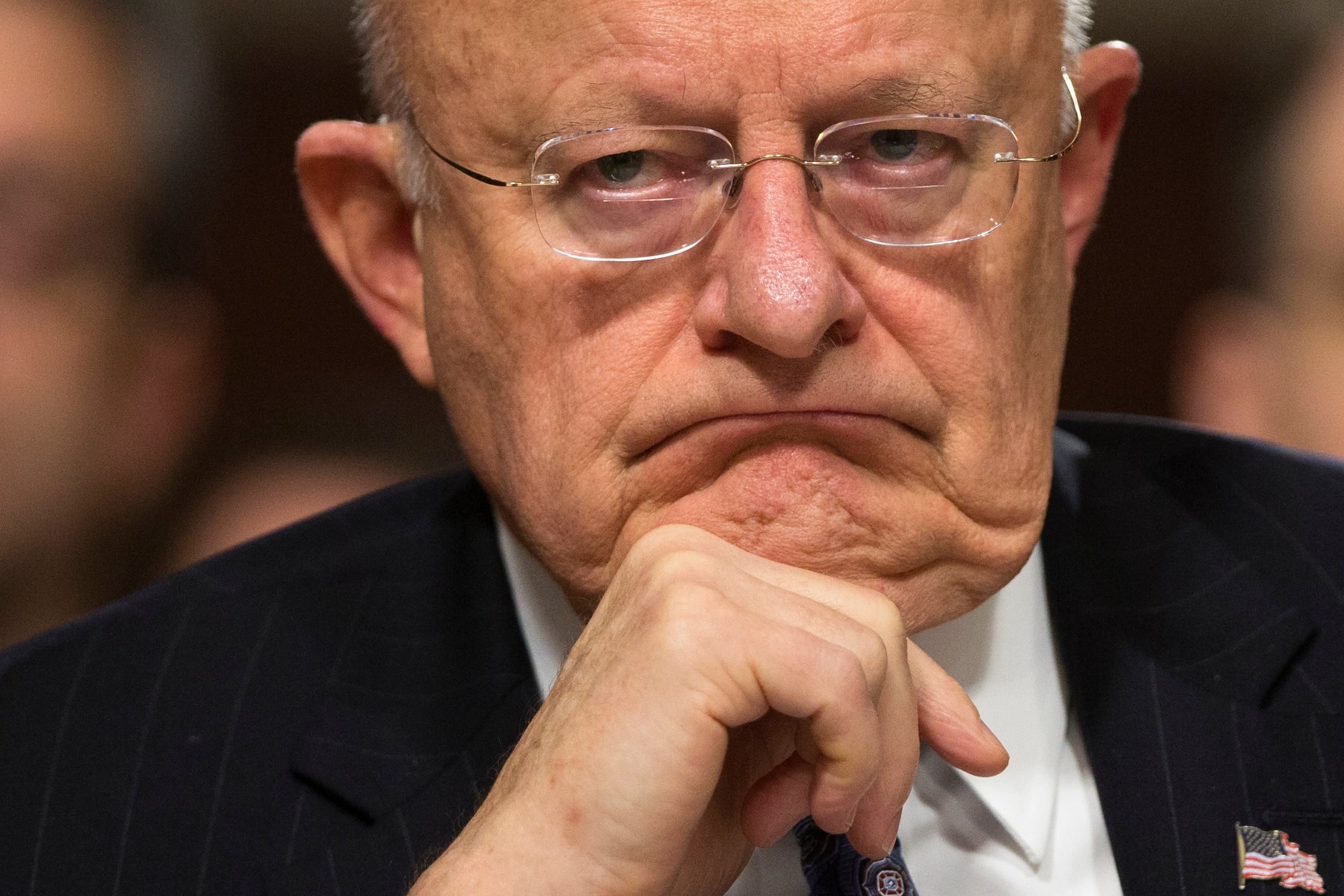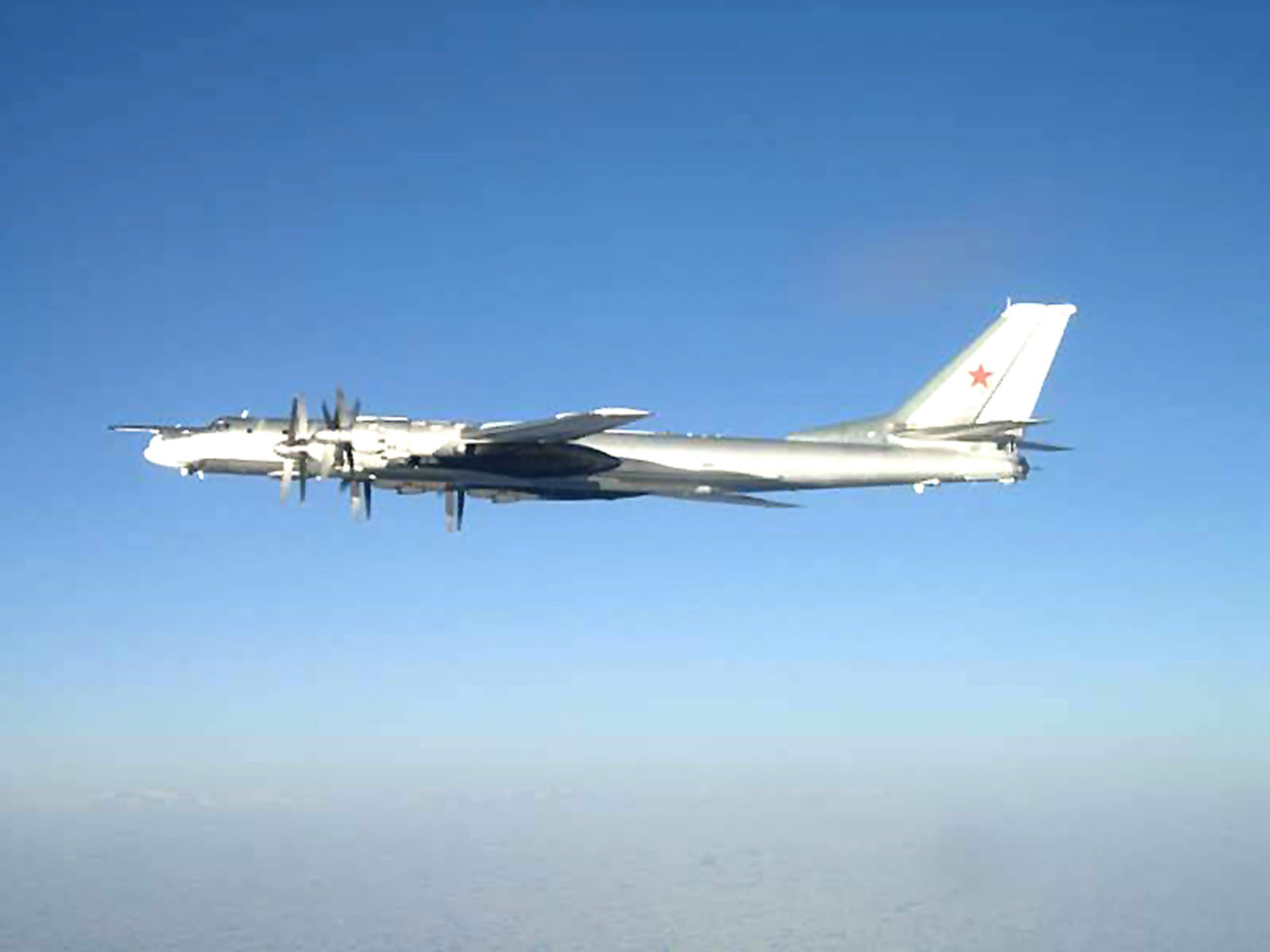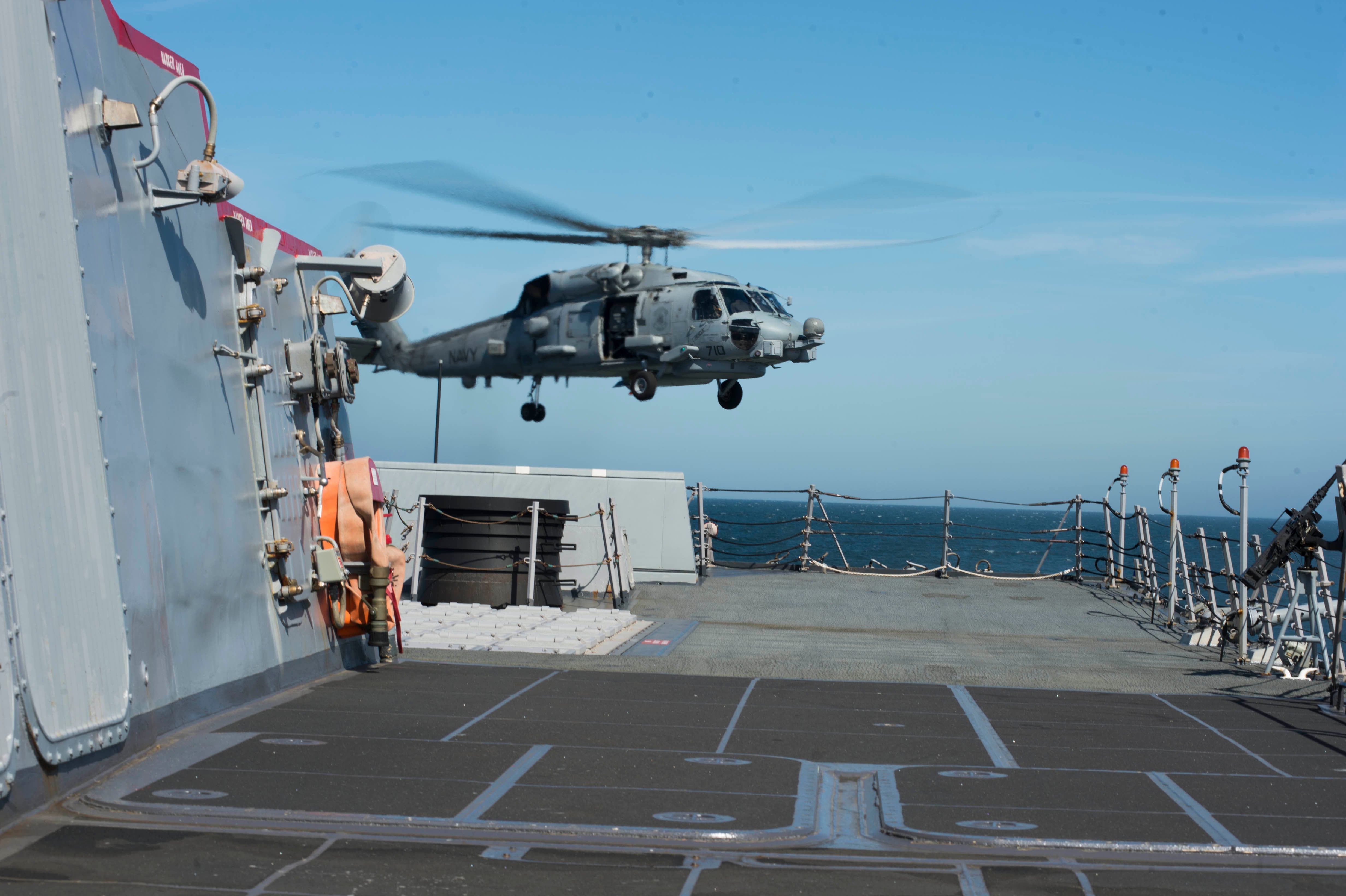On Feb. 23, Russian President Vladimir Putin watched the 2014 Winter Olympics, one of his signature achievements, come ?to a close from the stands of the Fisht Olympic Stadium in Sochi in an epic display of Russian culture.
Musicians, ballet dancers and athletes paid homage to the rich history of Russian arts and technological accomplishments. A massive children's choir sang the Russian national anthem and Russian dancers celebrated everything from the achievements of Yuri Gagarin, the first man in space, to the writings of Dostoevsky, Pushkin and Tolstoy.
"This is the new face of Russia," said Dmitry Chernyshenko, the Sochi Games' lead organizer.
As fireworks lit the sky over the Black Sea shores to the strains of Tchaikovsky, the world had no idea that it would indeed soon see the new face of Russia, and the new face would look a lot like the face of 25 years ago.
Since the end of the Sochi games and the fall of the pro-Russian government of Ukraine, as the Winter Games were ending, Putin's Russia has annexed the Crimea region by force, secured a vital warm-weather port in the Black Sea and sponsored a . and a Russian-sponsored civil war in Eastern Ukraine that has claimed the lives of thousands — all within a few hundred miles of NATO's borders.
Russia's military has taken on an aggressive swagger. Highly provocative run-ins are now common with neighbors and NATO nations alike. In the Black Sea, NATO ships like the U.S. destroyer Donald Cook have been buzzed by Russian fighters. Russian Tu-95 Bear bombers have reportedly been tracked near Canada conducting missile strike drills within range of targets in the United States, and Russian airplanes have been tracked as close as 50 miles from the California coast – the closest they've come first time since the end of the Cold War.

The Russian aggression has forced the Pentagon and NATO to reconsider their strategies. Senior military leaders, including NATO's top military officer, Air Force Gen. Philip Breedlove, are calling for a halt to the U.S. withdrawal from Europe. The U.S. Navy has dispatched ships on presence missions to the Baltic and Black Seas, with a growing awareness that atrophied skills like sub-hunting in cooperation with allies will be needed in the years ahead. And the U.S. Army dispatched 600 troops deployed on a 90-day training mission to train Eastern European allies on M-1 Abrams tanks and Bradley infantry fighting vehicles.
"Who would have thought on Jan. 1, 2014, we'd have an annexed Crimea, a civil war fostered, fueled and nurtured in Eastern Ukraine, and a very different relationship with a Russia that for the last 20 years has been seen as an economic partner?" said Royal Navy Vice Adm. Peter Hudson, head of the NATO maritime mission in an October interview.
The tensions have turned 6th Fleet into an operational theater, and not just the R&R destination it has been for most of the past decade as ships pass through to 5th Fleet. Facing down the Russians, a sophisticated and experienced former adversary, is suddenly a very real mission for more of the fleet, putting the Naples, Italy-based 6th Fleet at the center of the world's attention in this budding new Cold War. Some defense experts believe this is likely to be the case for the foreseeable future, with no sign that Putin's forces will de-escalate as the Russian leader basks in the wave of nationalism stoked by these confrontations are stoking.
On Nov. 20, Reuters reported that NATO air assets have scrambled about 400 times this year to intercept Russian fighters and bombers that which have routinely operated without turning on their transponders, creating which creates a potentially disastrous hazards for civilian air traffic.
Russia has also taken to bullying smaller countries on its borders such as Finland, Moldova, Estonia and others,
"It is a pattern which we have not seen for many years and it is a pattern that reminds us of the way they conducted these kind of military air activities back in the time of the Cold War," said NATO Secretary-General Jens Stoltenberg, in the report.
Defense experts warn that Putin's forces are on a collision course with NATO that pits the U.S. and its allies against a sophisticated, even "mischievous," foe set on resurrecting the Cold War playbook, according to one leader.
'Highly Disturbing'
Russia's aggressive provocations have multiplied over the past year, according to experts. In November, the European Leadership Network think tank released a paper calling the increase in such incidents as "highly disturbing."
The group pointed to about 45 documented confrontations between Russian military forces and NATO, as well as Finland and Sweden, and argued that the risks of sparking a crisis are growing with each incident.

Two Russian long-range, nuclear-capable Tu-95 Bear bombers, like the one seen here, came within 50 miles of the California coast on May 9. No international protocols were broken, however, and NORAD spokesman Capt. Jeff Davis described the incident as a "professional encounter."
Photo Credit: Navy, Getty Images
The incidents "add up to a highly disturbing picture of violations of national airspace, emergency scrambles, narrowly avoided midair collisions, close encounters at sea, simulated attack runs, and other dangerous actions happening on a regular basis over a very wide geographical area," according to the report said.
"The increased number and gravity of incidents described also points to a disturbing dynamic," it continuedthe report goes on to say. "The Russian armed forces and security agencies seem to have been authorized and encouraged to act in a much more aggressive way toward NATO countries, Sweden and Finland."
And that has translated into more high-stakes encounters for U.S. forces in international airspace and on the high seas. In April, just after the annexation of Crimea, the destroyer Donald Cook was buzzed by a Russian SU-24 Fencer with 12 low passes in the Black Sea.
In April, an armed Russian SU-27 Flanker fighter came within 100 feet of an Air Force RC-135U surveillance aircraft over the Sea of Okhotsk off the Russian coast. The event prompted high-level talks between the military leaders on both sides to prevent such an event from happening again.
But in July, media reports emerged that a second RC-135 had been chased by Russian interceptors into Swedish airspace during a surveillance mission in the Baltic.
Hudson, the Royal Navy admiral, said these incidents on the high seas have become almost routine for NATO sailors, including those with the U.S. Navy.
"On the back of Ukraine they are more assertive in their behavior," Hudson said. "We've seen the instances in the Black Sea flying aircraft at NATO ships; their surface ships have [been] interfering with NATO operations in the Baltic Sea, shadowing and intelligence collection. We've seen a more assertive posture over the past 12 months, behavior we haven't seen for 25 to 30 years [since]during the Cold War."
Hudson said that Russian ships have even resorted to unprofessional tactics that can been seen as petty or just down-right aggravating.
"In the Baltic and the Black Sea, we see a couple of Russian small warships fouling gunnery ranges," he said. "You know you have to announce on the radio that you're conducting gunnery exercises to make sure fishermen and yachts are safe, so they deliberately park themselves in the box to foul gunnery ranges. They've gotten inside safety when we've conducted diving operations, etc.
"These sorts of things are irritating, mischievous. They are nuisance factors [and] they are overly aggressive in some respects. And this is the renewed Russian way of asserting its authority."
'Up our game'
The renewed tensions with Russia and more confrontations with Russian forces on the high seas have already forced the Navy to ramp up its presence in Europe.
Since the crisis erupted, the destroyers Donald Cook, Truxtun and Ross, the cruiser Vella Gulf and the frigate Taylor have all made high-profile appearances in the Black Sea. Vella Gulf, in particular, transited made repeated trips through the Turkish Straits to the Black Sea at least three times on on no fewer than three occasions on missions to reassure allies — including Bulgaria and Romania — that the U.S. is committed to the region and collective defense.

An MH-60R Seahawk helicopter assigned to Helicopter Maritime Strike Squadron 72 lifts off the flight deck of the destroyer Oscar Austin on June 12 during Baltic Operations (BALTOPS) 2014.
Photo Credit: MC3 D.J. Revel/Navy
New ports have opened up to sailors deploying to 6th Fleet as well, including Varna, Bulgaria; Constanta, Romania; and Batumi, Georgia, which have all hosted U.S. ships since the Ukraine crisis began.
There is serious work with alllies in Europe to rebuild high-level capabilities between allies that may have eroded during the past two decades, said Thomas Fedyszyn, a Russia expert at the Naval War College who commanded a U.S. cruiser during the Cold War.
"For about 20 years we've had forces with NATO, but we don't do high-level warfare like [anti-submarine warfare, anti-air warfare]," Fedyszyn said. "Now we fight piracy and immigration and counter criminality."
Fedyszyn said that sailors should be ready for more face-to-face encounters with a sophisticated adversary.
"Sailors deploying can increasingly expect meeting up with Russian ships," he said in an October phone interview. "Do expect those cold war confrontations, and be ready for them. Also expect to be training for higher level operations. You might be doing some serious AAW or ASW. When your helo lifts off, it won't be looking for pirates or drugs -- it may be looking for other warships."
That's in line with the urgent ramp up for which Hudson has been calling for. When Hudson flew to Washington, D.C., in October, he visited the Pentagon to speak with Chief of Naval Operations Adm. Jon Greenert about new exercises and commitments to NATO training and commitments in Europe.
Hudson told reporters that it is important to get back in the habit of fighting together if NATO wants to show Russia it is serious.
"It used to come naturally 25 years ago," Hudson said during a Pentagon round-table with reporters. "We used to do big, complex NATO exercises in all environments, but the world has changed. We haven't been doing as many of those in the last 10, 15 years. But I think Ukraine has told us we need to up our game and I think that's the plan in the near future."
Hudson said the first major exercise, Trident Juncture, is scheduled to begin next year, called Trident Juncture, and will involve nearly 25,000 NATO troops.
'The new normal is bad'
Military leaders and defense experts are cautioning that renewed Russian aggression isn't going anywhere as the U.S. military tries to recalibrate its presence. They expect the tensions will make 6th Fleet missions to track Russian forces to be as common as, say, counter-drug deployments have been for Mayport, Florida, ships or oil platform defense missions once were was once for U.S. ships in the Persian Gulf.
The U.S. needs to steel itself for a long period of tensions and confrontation with Russia, said retired Adm. James Stavridis, the former NATO supreme allied commander Europe and current dean of The Fletcher School at Tufts University in Massachusetts.
"I think we are in a new normal, and the new normal is bad," Stavridis said in a Nov. 25 interview. "The new normal is not quite the cold war ... we're not quite there. But the new normal will be an aggressive, revanchist Russia that seeks to reconstruct a Warsaw Pact-lite around its borders. … I think it is probably the most significant strategic shift that is underway in the world today."
The U.S. is facing down Putin's navy at sea while ratcheting up pressure on its leaders through targeted sanctions. It remains to be seen whether those strategies will work. For now, Putin's dangerous game is tailor-made to bolster his own popularity with Russians, said Fedyszyn, the NWC expert.
"This is not the left side of [Putin's] brain in operation, don't confuse this with logic," Fedyszyn said. "This is national pride, making Russians feel good about how powerful they are. Russia has been feeling dissed for a long time. Now, having spent a little money on defense, they are showing how tough they are. It's part of Putin's calculus, but it's not exactly smart."
Stavridis agreed, saying that ultimately Putin is hurting his country by damaging its economic ties with Western Europe and the United States.
"What I think you are seeing is a Putin who is tactically very successful: by undertaking an annexation of Crimea; a destabilization of Ukraine; a destabilization of Moldova; by sending ships into the Caribbean; sending out long-range bombers. Where is he successful? He's successful in Russia. That's the audience for those activities. He is banging the drum of Russian nationalism louder than we've seen it in 50 years.
"Those tactics help him immeasurably at home to maintain control and to feed the fires of Russian nationalism. He's going to be tactically successful in those regards. He's going to be a strategic failure."
David B. Larter was the naval warfare reporter for Defense News.





